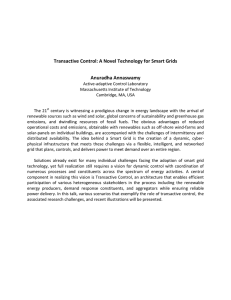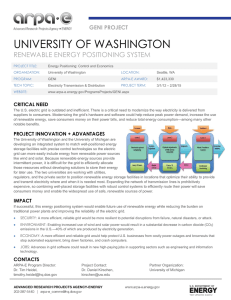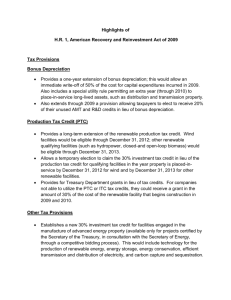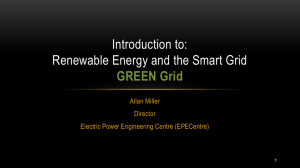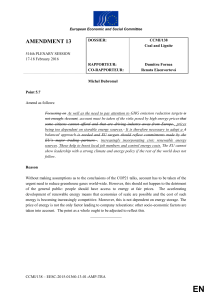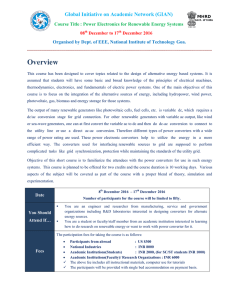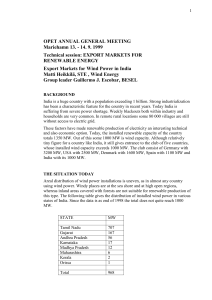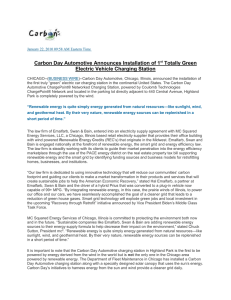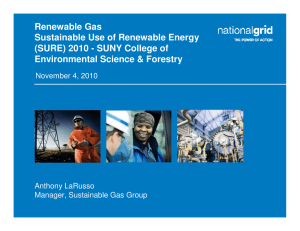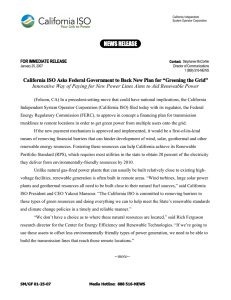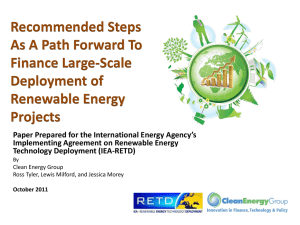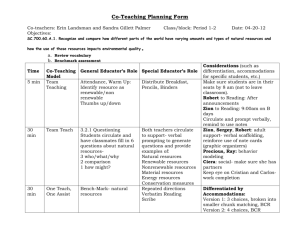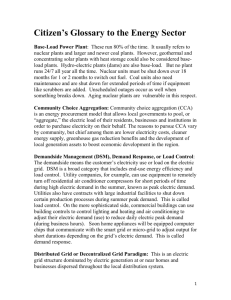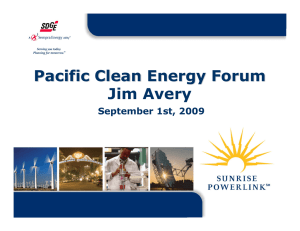Land Use and Renewable Energy – IPI conference - rev1
advertisement
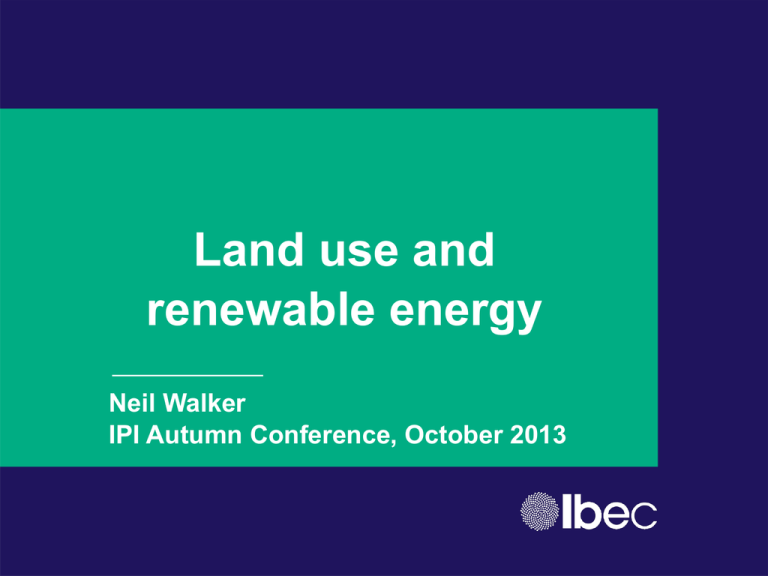
Land use and renewable energy Neil Walker IPI Autumn Conference, October 2013 Four interrelated themes • • • • Complementary uses for land Plan-led versus developer-led approaches Social licences to operate Government leadership Competing energy-uses for land? • Dedicated energy crops • Agricultural production not to be compromised by biofuels • Hence need to maximise the use of otherwise unproductive land • Onshore wind-farms • Wind-farms need not disrupt existing farm activity but it’s preferable to locate them away from rural populations • Hence the desirability of exploiting marginal land • Cut-away peat bogs – a ‘win win’ • thousands of hectares of currently-inaccessible land with a combined energy and amenity potential Multiple policy objectives • Reducing our electricity carbon-intensity • Meeting EU targets for % renewable energy • Improving energy security and affordability • Promoting growth of the Irish green economy • Conserving heritage and endangered habitats • Involving communities in decision-making Mixed quality of wind projects • An unintended consequence of well-intentioned policy on renewables? • DCENR’s renewable energy feed-in tariffs – REFITs - provide an investment signal to potential developers • EirGrid’s ‘Gate’ process for Grid connection offers is effectively first-come first-served • consequently, negotiations with landowners often preceded EIA studies, planning applications and engagement with affected communities • A substantial proportion of these projects will probably never get planning approval – whether for environmental or social reasons Potential for wind energy sales to Britain is enormous Some commentators are comparing it to the size of Ireland’s highly successful Agri-Food sector… but if it is seen as developer led, there is no guarantee of achieving the full potential Recent media coverage “WIND ENERGY PROJECT CAN ONLY PROCEED IN COMPLIANCE WITH A NATIONAL POLICY FRAMEWORK” “Minister Rabbitte deplores misinformation and misrepresentation of export project” Room for a more plan-led approach? • Greater consistency across local authorities in application of SEAI’s LARES principles • Likewise, the soon-to-be-updated DECLG Wind Energy Planning Guidelines • More structured community engagement from earliest stages of a project, with an emphasis on securing a ‘social licence’ • Aligned with findings of the forthcoming Strategic Environmental Assessment Show me the money! • Projects involving transfer of renewable credits to other Member States may need to demonstrate a visible country-wide benefit in addition to local benefits • Perhaps ring-fence some inter-Governmental contract revenues to help maintain our energy affordability? But will this be enough to secure a ‘social licence to operate’? Some environmental NGOs appear willing to raise objections simply as a matter of principle Support Tolerance Rejection Facing up to NIMBY-ism? • The Government recently issued a document that acknowledges Grid infrastructure to be of strategic national importance • Grid projects are generally subject to the SIA Directive, so planning applications are made directly to An Bord Pleanala • Alongside active engagement with communities • But local protest groups have sprung up all over the place, and have sometimes been publicly supported by constituency TDs across different parties • Including - in one recent case - a Cabinet Minister! Could the Government do more to help? International Energy Agency (2012) • “Enhance the consultation, planning and consenting process for critical infrastructure projects with an emphasis on balancing between the concerns of local communities and economic, social and energy security benefits” • “Irish Government needs to enhance public awareness of the fundamental benefits” • “A more integrated approach by project developers to early engagement and consultation will ensure a more balanced public debate and more timely delivery” • “Government should also review the effectiveness of the consultation processes at local level as well as the Strategic Infrastructure Act in delivering the desired outcomes” Political leadership
